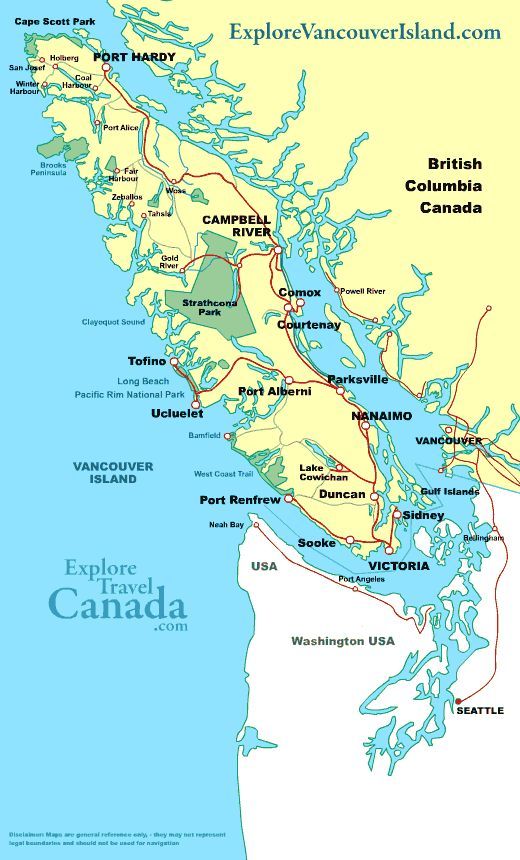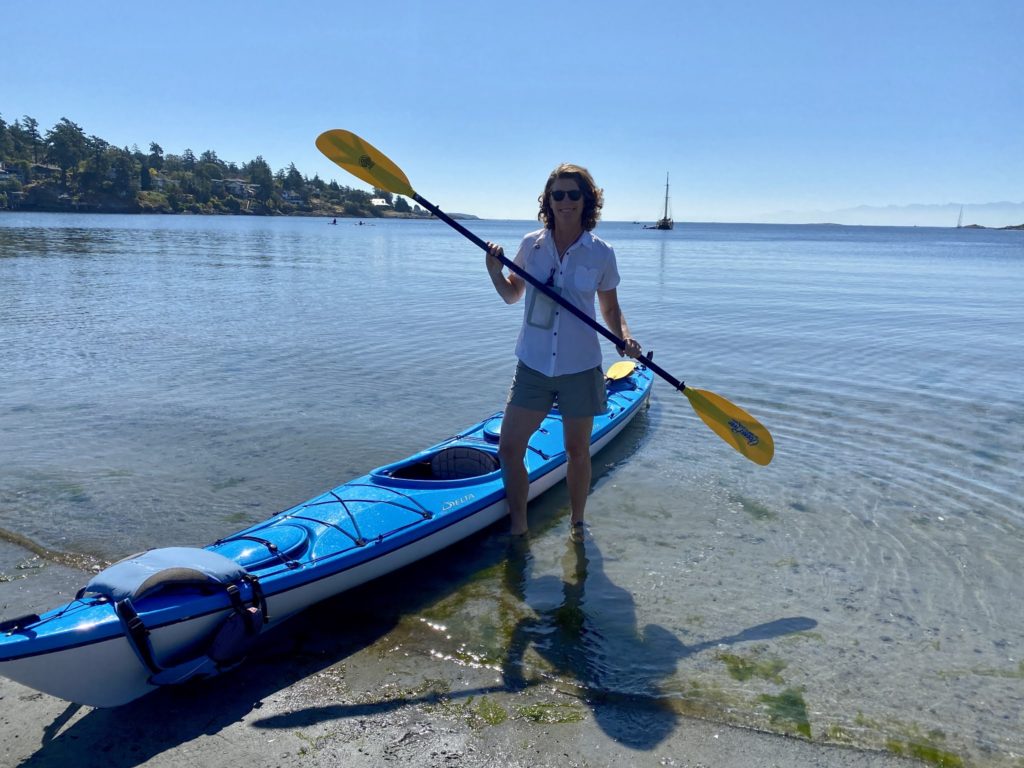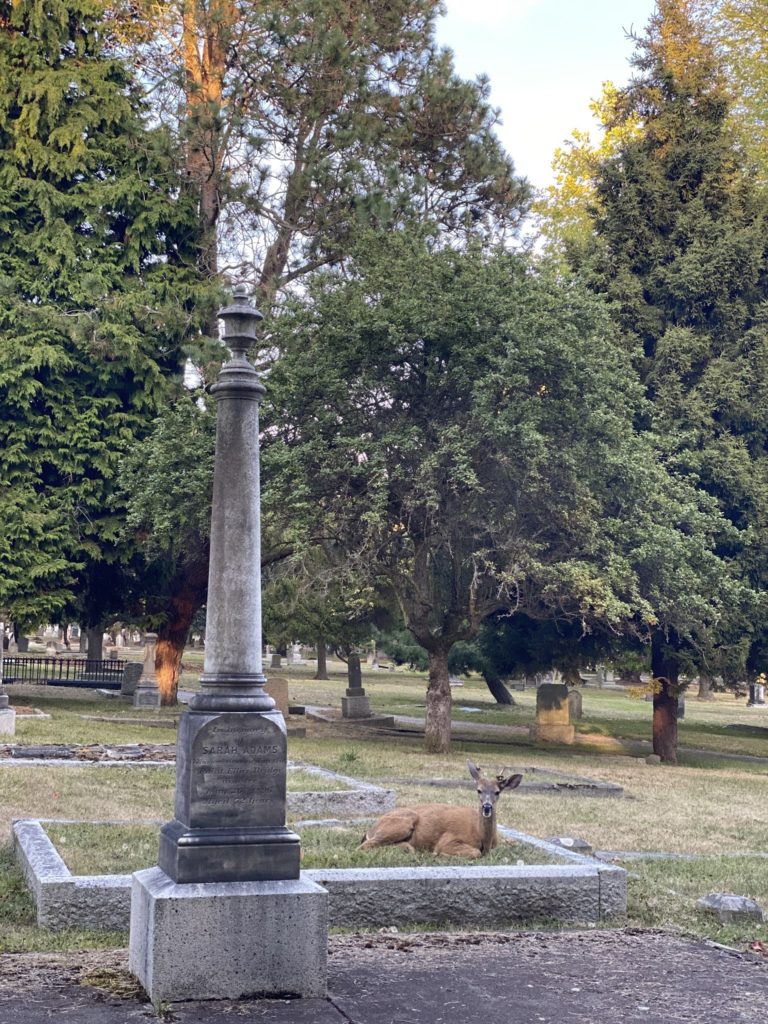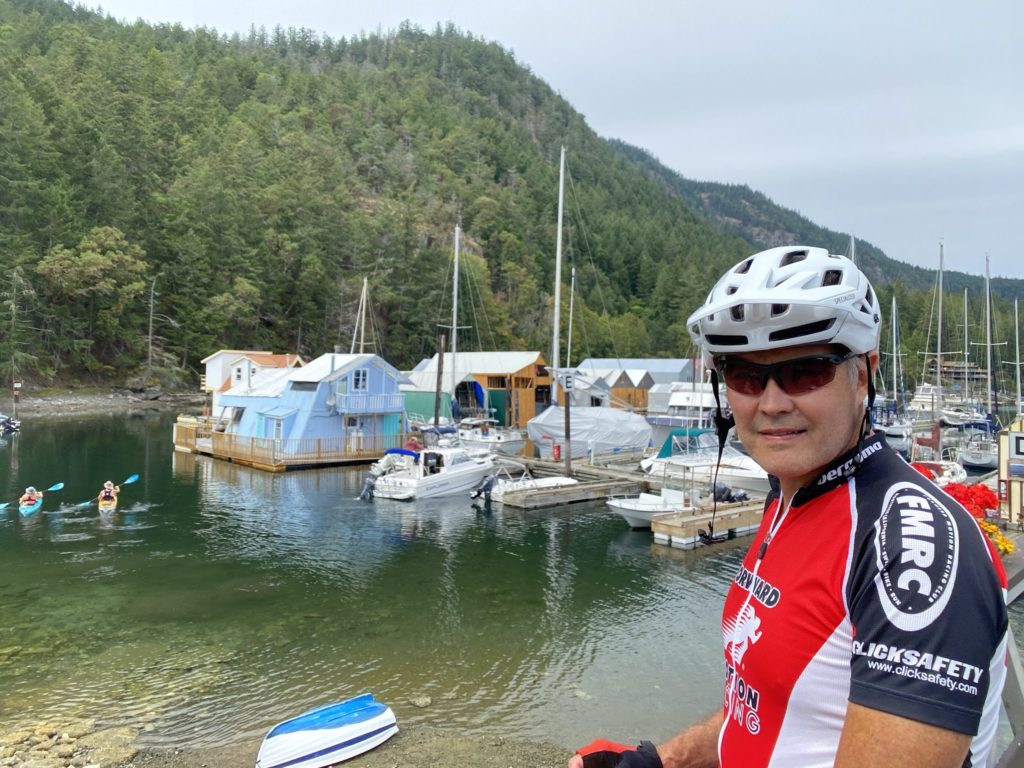I’m feeling a bit sheepish about writing a blog about Victoria, BC. Every morning when I haul out my iPad and click on my various news sites, including the SF Chron, I’m confronted by an apocalyptic spectacle of fires and smoky air all around the Bay Area. The idea that it took raging fires to knock coronavirus and racial protest news from the top of the daily paper is sobering.
Despite my feeling vaguely guilty, as well as grateful, that I am not in the Bay Area, the reality is that I’m not so I might as well reflect on where I actually am. We are heading into our last week here in Victoria. Given that this trip is a bit of a reconnaissance mission in case we end up deciding that we need to set up shop somewhere outside my beloved but suffering Bay Area, it’s time for me to summarize what I’ve learned in my several weeks living here somewhat like a local. So, here are a few of my thoughts on Victoria.
Island Life: Victoria is on Vancouver Island and not on the mainland of Canada. Vancouver Island is the largest island off the West coast of the Americas and is approximately 300 miles long and 100 miles wide. Greater Victoria, located on the Southern tip of Vancouver Island, has a population of about 400,000 which is almost half of Vancouver Island’s total population of 870,000. Being on an island has both advantages and disadvantages.

One advantage is that there is less virus here, though it is starting to creep over. BC has decided that it’s soft approach to good behavior is inadequate and so they just introduced fines for folks who are caught hosting non-compliant gatherings. Over the weekend here in Victoria, one apartment dweller was fined $2300 for hosting a large party. BC is trying hard to keep the virus under control and it will be interesting to see if they can.

Another aspect of being on an island is that the ferry information is on the radio all the time with information about whether there is a “one ferry” or “two ferry” wait to depart. Vancouver is the big city nearby and the ferry takes just under 2 hours to get there but when you take into account driving your car to the ferry and waiting in line to get on, the total time is 4 hours to or from Vancouver, making it a significant trip. Some people fly instead as this is quicker and can be done round trip in one day.
Then there is the approach of just not leaving the island. It is a big island, though most of it is uninhabited. There is enough here that you don’t really need to leave unless you have family on the mainland or want more cultural variety than what you can find here. Given John and my need for variety, I’m guessing that if we did choose to live here, we’d need to plan at least one long weekend per month in Vancouver to take in more live music and other culture as well as greater restaurant variety and I’d probably be flying through Vancouver anytime I wanted to visit my family or friends in the states.
Natural beauty, recreational opportunities, and an active population: Victoria is a very pretty place, as is all of Vancouver Island. The sea is ever present which provides opportunities for kayaking and sailing; the Garry oaks and rocky outcroppings are a beautiful feature; the weather has been perfect this month so we’ve missed the long, grey months that I believe can be a negative in the wintertime; many cars have either kayak or bike racks since so many people are coming or going from a bike, kayak, paddleboard, or kite boarding adventure.


Deer everywhere: Clearly, Victorians love their deer even though they wander around eating the plants and flowers in their gardens, hang out in the cemeteries, and jaywalk across the roads. There are signs that say things like “Caution, bambi” indicating a protective rather than angry attitude toward them. John, with his family background in wildlife management, has been grumbling about the infestation and the need for neutering some portion of the population (or worse) but his perspective must be in the minority here.

Presence of Native Culture and Acknowledgement of Past Wrongs: Native culture is part of the fabric of Canada and is acknowledged at every level of politics here. Every day at 3pm, BC’s Provincial Health Minister gives a daily update on COVID and he always starts it with an acknowledgement that he is “honored to be here on the territory of …” the local tribe before he proceeds with the briefing. While this does not make up for grievous past wrongs, it’s something and the there even exists a Guide to Acknowledging First Peoples and Traditional Territory. Can you imagine an American politician doing the same, either in acknowledging being on the soil of the native Americans we displaced or acknowledging what we owe to the black folk who were enslaved? It’s hard to envision somehow. Photo below is of the world’s tallest totem pole at 127 feet which is here in Victoria’s Beacon Hill park.

Old folks: Victoria was once known as a place for the “Newlywed and nearly dead.” I think it’s moved on quite a bit in the past few decades as the population has surged and there’s been a big influx of population from other parts of Canada but there are still a lot of older folks here. Victoria’s boast of having the “best climate in Canada,” probably has something to do with it and one way it is hospitable to this demographic is it has built lots of apartment buildings to provide housing affordable to seniors. The photo below shows one of the very active local senior citizens staying healthy on her recumbent trike, waiting for a coffee, while wearing her mask.

West Coast vibe: Finally, Victoria has what I can only call a West Coast vibe. Before coming here, we were in Vernon in inland BC. Vernon’s economy is based on natural resources, its politics are more conservative, and there are lots of folks with big motor boats out on the lake. Victoria has a different feel. There’s the progressive politics, the way people dress, the cafes and juice bars, the presence of Teslas (which, of course, indicates more money), and the “je ne sais quoi” of what makes up the West Coast vibe. Instead of motor boats, there are lots of kayaks and canoes. And instead of so many big trucks, there are electric cars and bikes. You don’t see surfboards the way you do in California coastal cities but there’s still a sense of familiarity to me.

Next week, we head about halfway up the island to Comox for a few days and then over to Hornby Island, a small island just off the east coast of Vancouver island, which takes two short ferry rides to access and where we’ll stay for a week. I’ll write next from up island.
